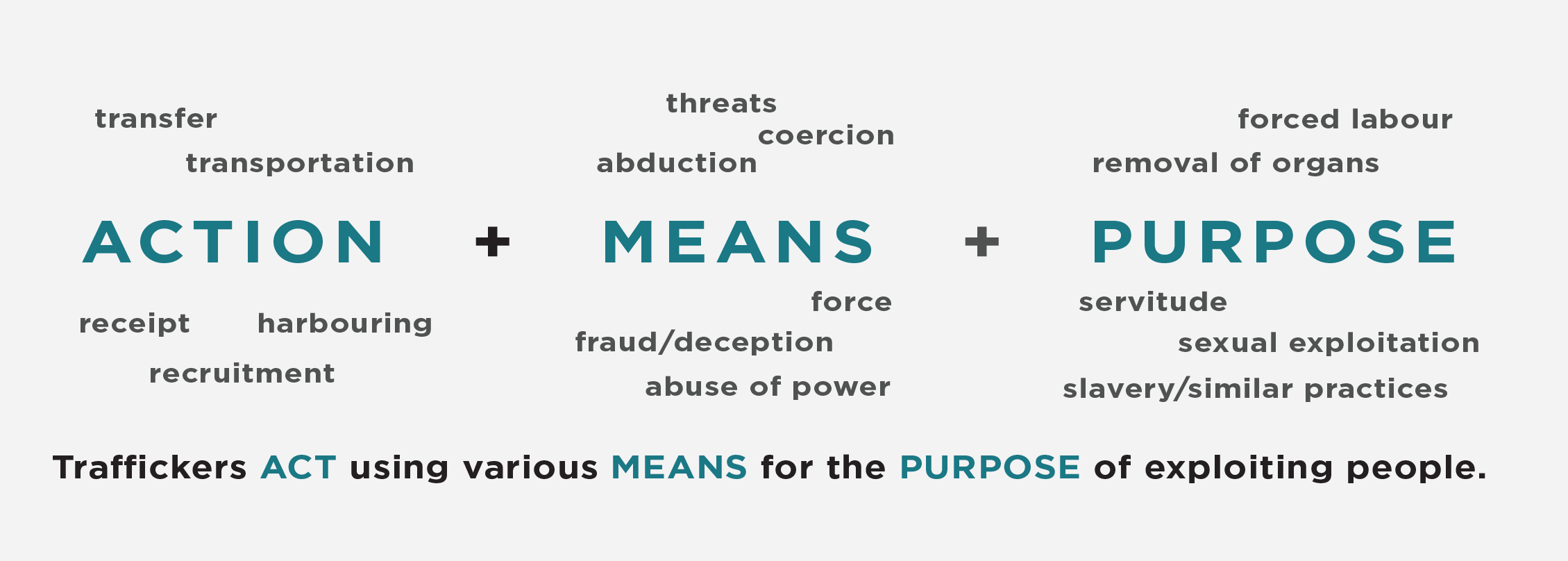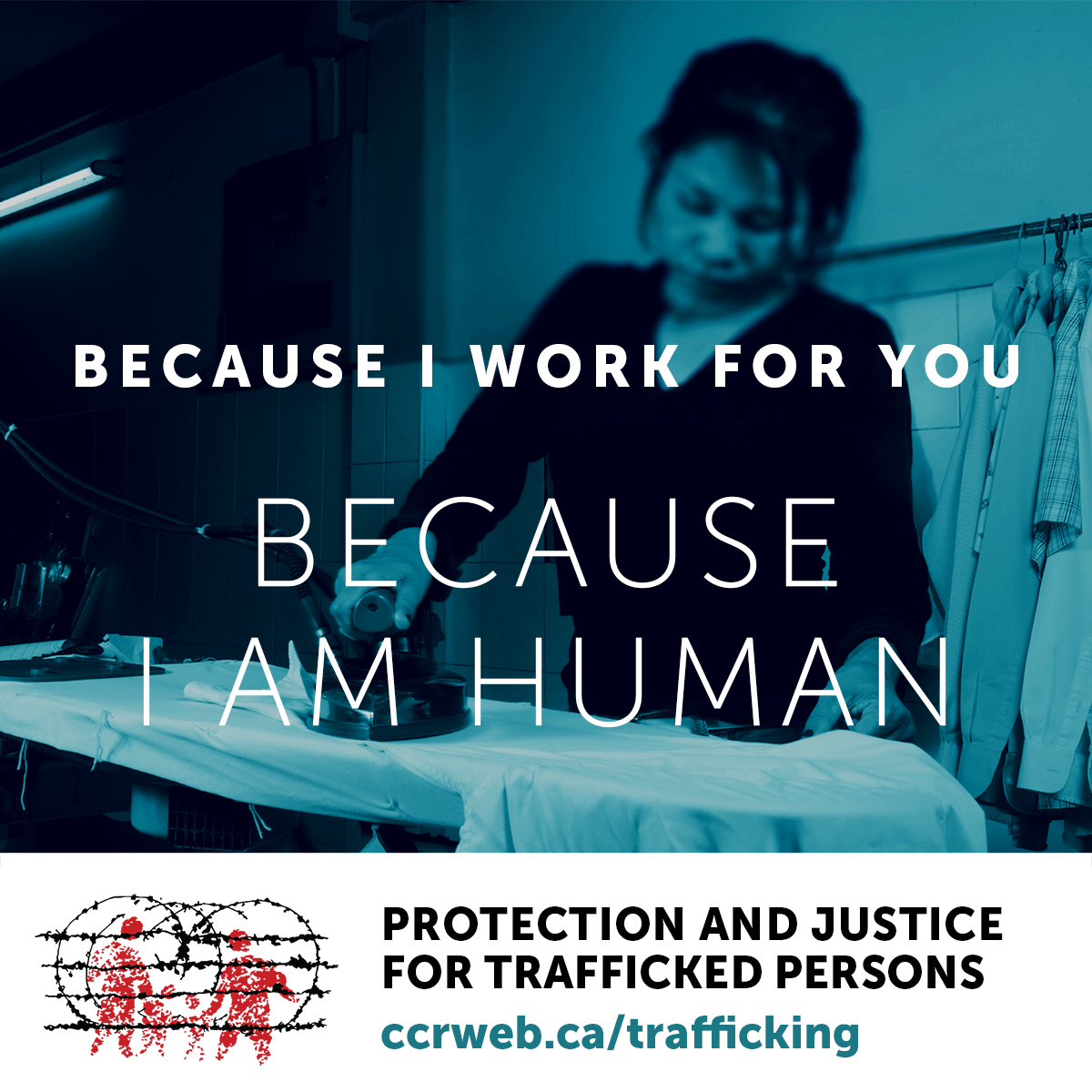Report of National Networking Meeting on Trafficking and Workshop, 23-24 November 2011
Summary report of the National Networking Meeting on Trafficking and the workshop on Serving Trafficked Persons held 23 and 24 November 2011, Montreal, Quebec.

Summary report of the National Networking Meeting on Trafficking and the workshop on Serving Trafficked Persons held 23 and 24 November 2011, Montreal, Quebec.
In this issue: CCR National Forum on Trafficking in Persons this month, CCR Labour Trafficking Backgrounder, Canadian Women’s Foundation National Task Force Report, new OSCE handbook and more…
In this issue: New CCR resource on Labour Trafficking in Canada, Local Safety Audit Reports on trafficking in persons in Ontario, Government of Canada anti-trafficking resources and more…
Trafficking in persons occurs when someone obtains a profit from the exploitation of another person by using some form of coercion, deception or fraud. Exploitation can take many different forms, including through forced labour in various areas such as the service, manufacturing, agricultural or construction sectors, through domestic work, and through work in the sex industry/prostitution. Regardless of the form of exploitation, trafficking in persons is a violation of a person’s basic human rights and it affects men, women and children.
This document aims to give information about how trafficking for labour exploitation can take place in Canada.
 Trafficking for forced labour happens in a context of both global and local economic inequalities where many people are looking for ways to better protect and provide for themselves and their families.
Trafficking for forced labour happens in a context of both global and local economic inequalities where many people are looking for ways to better protect and provide for themselves and their families.
Around the world, approximately 21 million people are in a situation of forced labour. Most of these individuals are exploited by private individuals or businesses. A minority of people are forced to work by state entities. Women are overrepresented among forced labourers globally.[1]
Root causes of trafficking are often socio-economic or political. Poverty, conflicts, inequalities (including based on gender) and persecution are among the common contexts. While many people find themselves in situations of forced labour in their home communities, these root causes often push people to migrate in search of opportunities.
Increasingly restrictive immigration rules worldwide make it more difficult for people to migrate safely and make many migrants more vulnerable. Traffickers take advantage of these situations by exploiting the very limited options and lack of legal and social protections that are available to migrants.
 Trafficking for the purpose of labour exploitation takes place when some means (including taking advantage of a person’s particular vulnerabilities) are used as a way of controlling someone in order to cause them to believe that they have no choice but to carry out a specific work or service.
Trafficking for the purpose of labour exploitation takes place when some means (including taking advantage of a person’s particular vulnerabilities) are used as a way of controlling someone in order to cause them to believe that they have no choice but to carry out a specific work or service.
The following shows what the various elements involved in labour trafficking might look like concretely.
An action whereby a person is:
A means whereby a person:
Exploitation, whereby a person is:
The people involved are not always just the employer or recruiter: acquaintances, neighbours and family members can also play a role.
Migrant workers and labour trafficking
In recent years, Canada has increasingly shifted its focus from permanent to more precarious temporary immigration. More workers are now being brought into Canada on a temporary basis with fewer rights than other workers to fill labour needs. These conditions and the lack of employment options available to them have made migrant workers extremely vulnerable to abuse and exploitation.
Trafficking in persons is the most extreme form of exploitation faced by migrant workers in Canada.
In Canada, trafficking for the purpose of labour has predominantly affected migrant workers. Those most affected by abuse and exploitation often come with valid work permits under the “low-skilled” streams of the Temporary Foreign Workers Program (TFWP), including the Low-wage and Primary Agricultural Streams and the Live-in Caregiver Program. Temporary Foreign Workers employed under these streams may be employed in restaurants, hotels or other hospitality services, on farms, in food preparation, in construction or in manufacturing, as well as in domestic work.
Vulnerabilities of Temporary Foreign Workers to trafficking in persons
The TFWP conditions place migrant workers in a situation where they are vulnerable to exploitation and trafficking. These conditions include:
Unfortunately, the changes introduced to the TFWP in June 2014 do little to strengthen protection measures for workers. Although some enforcement and monitoring measures have been added, the program continues to rely overwhelmingly on a complaints system that migrant workers are unlikely to use as this can still lead to deportation.
The shift towards more restrictive immigration policies in Canada has also created additional opportunities for people to be trafficked for the purpose of forced labour, by creating additional vulnerabilities that traffickers take advantage of.
Refugee claimants and labour trafficking
Some trafficked persons are forced by their traffickers to make a refugee claim, which is either meant to fail or is not pursued, so that the person is subject to removal. This facilitates traffickers’ ability to threaten and control trafficked persons in order to exploit their labour in different ways.
Recent changes to the Immigration and Refugee Protection Act bar people whose refugee claims have been rejected, withdrawn or abandoned, from applying for status, including the Temporary Resident Permit intended for victims of trafficking.[3] This has made it harder for trafficked persons to escape their traffickers and easier for traffickers to control them through threats of denunciation and deportation.
In 2010, 23 Hungarian men were trafficked to Canada. They were forced to make refugee claims, their documents were taken away and they were made to work on construction sites up to seven days a week without pay and to participate in criminal activities. They were threatened and some were physically assaulted. They were monitored, controlled and forced to live in the basement of their traffickers’ homes.
Had they faced the new legal barriers, they likely would not have received protection in Canada.
Family and domestic situations
Trafficking for forced labour also takes place in situations where a person is forced into domestic servitude by family members or by others outside the family. Such cases can include:
 Children forced to work at home or exploited in other ways;
Children forced to work at home or exploited in other ways;Labour trafficking and precarious immigration status
People with insecure immigration status or no status at all are particularly vulnerable to trafficking for their labour. Whether they enter as a Temporary Foreign Worker, a refugee claimant, a student, a tourist or irregularly, traffickers may take advantage of their limited rights in Canada and the threat of detention and deportation, to force them to carry out work.
Due to changes in immigration policy, more people are in Canada with temporary and precarious status.
Possible solutions
The risk of trafficking can be reduced, and recourses for those who are trafficked improved by:
[1] International Labour Organization (ILO) 2012 Global Estimate of Forced Labour: http://bit.ly/1wreu9s.
[2] See Profiting from the Precarious: How recruitment practices exploit migrant workers, Metcalf Foundation, available online: http://bit.ly/QnrPBt.
[3] Canadian Council for Refugees, Access to Protection for Trafficked Non-Citizens: ccrweb.ca/en/protection-trafficked-persons
[4] Canadian Council for Refugees, Conditional Permanent Residence: ccrweb.ca/en/conditional-permanent-residence
[5] See Resource Information Guide to Human Trafficking Systems through Forced Marriages, South Asian Women’s Centre (SAWC): ccrweb.ca/en/resource-information-guide-human-trafficking-forced-marriages
In this issue: Bill C-36 passes second reading, RCMP report on domestic trafficking for sexual exploitation in Canada, awareness-raising PSA videos on trafficking of Aboriginal peoples in Canada, 2014 TIP Report released and more…
In this issue: New resource on Labour Exploitation for Live-In Caregivers, full report on CCR Trafficking Forum, Metcalf report on recruitment practices and exploitation of migrant workers, and more…
In this issue: Highlights of CCR Trafficking Forum, Supreme Court decision on federal prostitution laws, New Online Training on Human Trafficking for Service Providers, and more...
2-pager highlights report of the CCR National Forum on Trafficking held 27 November, 2013 in Kitchener-Waterloo, Ontario.
This Starter Toolkit is intended for anyone wishing to start or enhance outreach and awareness-raising activities on trafficking in persons in their own communities, organizations and sectors.
What does it mean to raise awareness about trafficking?
Trafficking in persons can be a complex issue to explain. Raising awareness about the issue means:
- Sharing and increasing knowledge about trafficking;
- Speaking up about the key issues involving trafficking and facing trafficked persons in Canada;
- Inspiring others to take action.
The toolkit highlights resources, both Canadian and international, that are used on a daily basis by organizations across Canada in their work on trafficking. The focus of the toolkit is primarily on the trafficking of non-citizens in Canada; however, resources can also offer useful guidance to those raising awareness about other trafficking situations. We hope to help groups and individuals learn from each other, build from tools that have already been developed and avoid duplicating work.
The toolkit includes:
> Access to CCR database of anti-trafficking organizations across Canada;
> Toll-free numbers around the country.
As anti-trafficking initiatives evolve and awareness about the issue increases around Canada, we hope this toolkit will equally evolve and allow for contribution of more practical information and tools. Suggestions can be sent to: trafficking@ccrweb.ca.